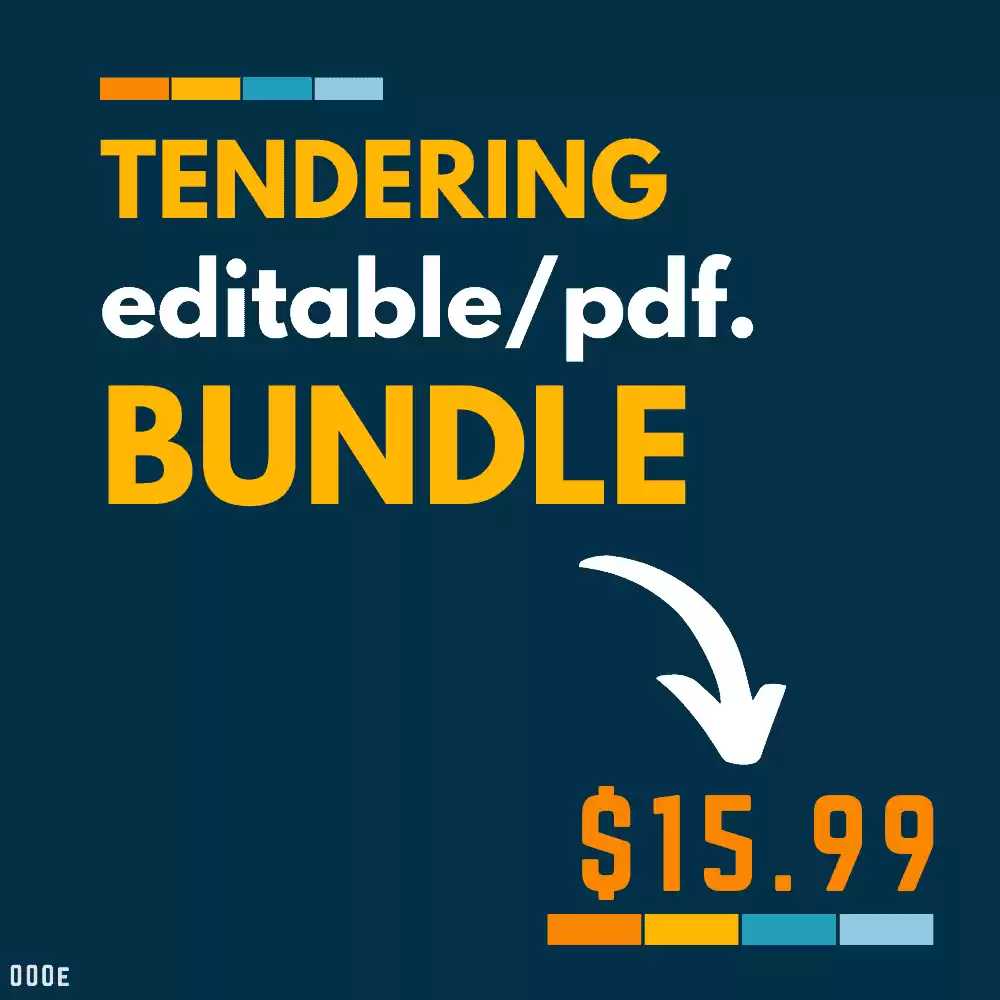To ensure the Commissioning Authority allows and costs for delivering and managing the commissioning process correctly in line with the client requirements, a Request for Proposal [RFP] and Scope Of Work [SOW] will need to be written and issued by the client team.
These can be quite daunting if you have a blank piece of paper to start with, but with a little push in the right direction and some pointers, they are not that complex.
Once written, the commissioning agent RFP can be used as a base document with some slight tweaking across multiple construction projects, depending upon the delivery and stage at which they are employed.
The following article will cover how to write an RFP to purchase Commissioning Management Services for most projects. The below will include an overview and a full in-depth RFP towards the end of the article that can be copied for your use and modification.
This CxA scope of work can be used to manage the commissioning process and activities rather than the delivery of the Testing, Adjusting, and Balancing [TAB] works.
All TAB works would usually be covered under a separate document that the General/Main Contractor creates.
🔗 If you want to understand the difference between an RFI, RFQ & RFP see our article | 'RFI vs RFQ vs RFP | Understanding the Differences'
🟩 What is a Request for Proposal [RFP]?
The Request for Proposal is written and issued to provide high-level instructions to vendors/tenderers describing a portion of works that are to be tendered relating to a project.
The Request for Proposal [RFP] will provide the following information to the parties involved:
- Background of the client
- Information on the project
- Timetable for tenderers
- Directions on what to do when receiving the RFP
- Response submission instructions
- RFP process after submission of costs
- Any specific contractual requirements
- Presentations and Interviews
- Scope of Work [SOW]
- Appendicies including various items [detailed below]
REQUEST FOR PROPOSAL [RFP] Template in MS Word [.doc] format to allow full editing with instructions
🟩 What does the Commissioning Agent do?
The commissioning agent is employed as an independent consultant to create, oversee, implement, manage and approve the commissioning process and works on a project.
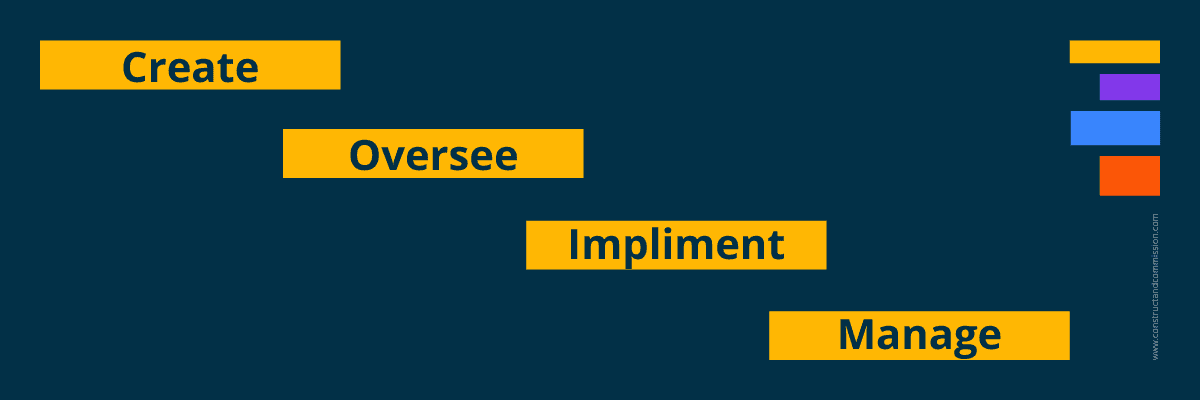
The works will verify and document that the building and its systems are planned, designed, installed, tested, and operated, and maintained. Ultimately meeting the Owners Project Requirements [OPR] and the design.
The commissioning manager can be known as the following:
- Commissioning Consultant
- Commissioning Agent
- Commissioning Authority
- Commissioning Provider
- CxA
🟩 When should the RFP be written and issued?
As the commissioning manager is important for the project’s early progress, the RFP should be written and issued before the Pre-Design Stage of the commissioning process starting.
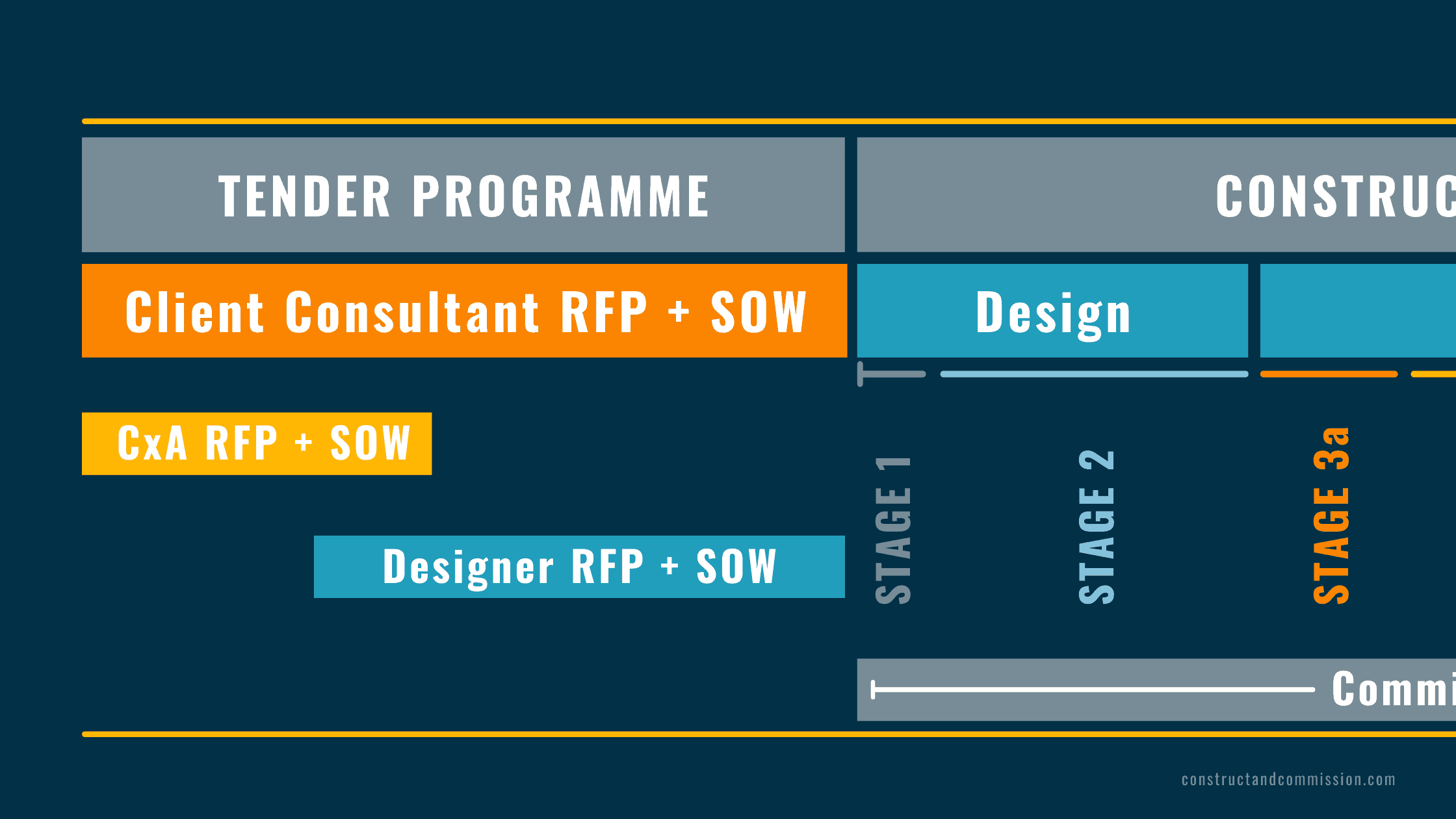
The commissioning team should be on the project and ready to start works, even before the design team – according to ASHRAE Guideline 0 – The Commissioning Process.
Here is a link to an article we wrote for the Commissioning Pre-Design Stage works, activities, and tasks that should be carried out.
🟩 Who should write the Commissioning RFP
This is a good question as the most qualified person to write this is the Commissioning Manager, but as they are involved with providing the costs for this work and are not employed for the project, they obviously can’t.
So, it falls to the responsibility of the Client/Owner/Architect or Project Manager to write the documents.
‘But they are not that qualified as to the requirements’, I hear you say…
…Correct, and that is why there seems to be, on many projects, a lot of confusion with scopes, delivery, and expectations as most of the time the Scope of Work is very loose and does not really detail enough information to allow
- Provide a consistent cost from all tenderers; assumptions can cost a lot of money
- Not cover all the requirements and thus missing
This allows the Commissioning Agent to dictate what they will deliver; the client and owner are usually none the wiser about whether a good value of service or not to base their selection criteria on.
🟩 Request for Proposal for Commissioning Services
Below we will detail a high-level layout that can be used for the above document, and a link is available at the end of this article.


🟩 Full Sample Request for Proposal [RFP]
The below ‘full sample RFP’ can be used and modified as required to suit your needs.
🟧 1.0 Introduction
🟨 1.1 Overview of Client
Insert a description of the client here [who they are, what they do etc]
🟨 1.2 Overview of Project
Insert a description of the project here [use the table below to enhance the information if possible]
| Project Name: | [add] |
| Project Address: | [add] |
| Project Type: | [add] |
| Green Building Certification: | [add] |
| Number of Floors: | [add] |
| Number of Car Parking Spaces: | [add] |
| Construction Programme [Start/Completion]: | [add] |
| Commissioning Programme [Start/Completion]: | [add] |
| Defects Liability Period: | [add] |
🟧 2.0 References
The below provides details of the parties involved and have input in the process referred to within the document.
| Client [Cl]: | [add] |
| Owner [Own]: | [add] |
| Architect [ARCH]: | [add] |
| Project Manager [PM]: | [add] |
| Quantity Surveyor [QS]: | [add] |
| Commissioning Authority [CxA]: | [add] |
| General/Main Contractor [GC/MC]: | [add] |
| All Parties [All]: | [add] |
🟧 3.0 RFP Timetable
The below provides an outline to the tenderer of the expected timeline for the RFP process to be conducted.
| Step / Stage | Date |
|---|---|
| Issue RFP [by Client] | [add] |
| Confirmation of Receipt [by Tenderers] | [add] |
| *Briefing [by Client to Tenderers] *Tenderers should request a briefing if feel required | [add] |
| RFI/TQ Deadline [by Tenderers] | [add] |
| RFI/TQ Response [by Client] | [add] |
| RFP Submission [by Tenderers] | [add] |
| Assessment Period #1 [by Client] | [add] |
| Respond to Tenderers [by Client] | [add] |
| Interviews [by Client/Tenderers Selected] | [add] |
| Assessment Period #2 [by Client] | [add] |
| Issue Contract Documents [by Client] | [add] |
| Expected Project Start Date [by Tenderer] | [add] |
🟧 4.0 Instructions Relating to the RFP
🟨 4.1 Receipt of the Document
It is expected that the Tenderer will be responsible for reviewing and examining all RFP documents and tender queries issued.
They should fully familiarize themselves with the information provided and ensure that any potential issues are raised and addressed.
Failure to do any of the above will be at the risk of the tenderer.
The tenderer should review all information noted within this document and any other attached information, and where discrepancies are noted, these should be raised immediately.
Unless the tenderer has raised anything, the tenderer is responsible and agrees that all information noted in the documents are available to them.
🟨 4.2 Confirmation of Tender
Upon receiving these RFP documents for tendering, the tenderer should confirm if they intend to tender by completing the ‘Confirmation of Tender Form’ attached in Appendix A and return via email to the Project Manager.
If the above is not received, then it will be deemed that the tenderer will not provide a cost and be removed from the Project list.
Email address to return to: [add]
🟨 4.3 Correspondance/Clarifications and Queries
All correspondence relating to this RFP shall be conducted via Email.
Email address to return to: [add]
🟧 5.0 RFP Response
🟨 5.1 Submission
The Tenderer is to submit their proposal and response, ensuring it is fully in line with the RFP, SOW, and all contract documents attached on the dates noted in Section 3.0.
The tenderer should ensure that all information is included as requested and that the proposal is clear, concise, and includes adequate detail to allow proper evaluation.
The tenderer is fully responsible for the accuracy and completeness of the proposal.
🟨 5.2 Difference in Scope
Unless otherwise stated or noted within the tenderer’s proposal, all requirements of this RFP, SOW & contract documents will be deemed met.
🟨 5.3 Alternatives
If the tenderer feels that a better alternative should be investigated, this should be noted.
The alternative should be noted in a separate schedule with any cost savings. The main proposal should be fully compliant and in line with the RFP, SOW, and contract documents.
Any alternatives noted shall be reviewed by the client team to understand if they could be pursued. The client is not obligated to accept them.
All alternatives shall be confidential between the client and tenderer who proposed and not provided to the other tenderers.
🟨 5.4 Request for Proposal [RFP] Costs
All costs associated with providing a proposal from the tenderer to the Client will be borne by the tenderer, no compensation will be provided by the client.
🟨 5.5 Confidentiality
All information relating to this Request for Proposal, Scope of Works, Contract Documents, the tenderer proposal, and any project information the project should be treated confidentially and not be communicated to any third parties unless on a ‘need to know basis for the reasons of preparing the proposal for these works.
🟨 5.6 Intellectual Property Rights
All intellectual property rights relating to this document and information/materials provided shall remain the property of [add Client]
We have put together this bundle so you can get all related documents, and buying them together provides even better value [Over 50% Off], as shown below.
Included - 20 Tendering Steps Guideline Document | 20 Step Tendering Process Graphic | Tender Interview Agenda Example | Tender Interview Question Examples | Prequalification of Tenderer Document Template | CxA Request for Proposal [RFP] Template | CxA Scope of Work [SOW] Template | Acknowledgment of RFP/RFQ | Request For Information [RFI] Template | Request For Information [RFI] Tracker/Log.
🟨 5.7 Coordination between Parties
All tenderers submitting a proposal for the works as detailed agree that there have been no discussions or collusion with other tenderers from the start of this RFP process until the contract’s awarding.
🟨 5.8 Contract Requirements
The successful tenderer will be required to enter into a contract per the conditions in Appendix E.
🟨 5.9 Site Visits
If the tenderer feels required, they can request a ‘Site Visit’ to help understand and provide more information about the project.
🟨 5.10 Briefings
If the tenderer feels required, they can request a ‘Briefing’ to help understand and provide more information about the project.
At the briefing, the client can provide and answer any queries and run through any concerns.
Any information provided to the tenderer or information obtained that the client feels is beneficial to the process shall be shared with the other tenderers.
If information is shared by the tenderer that enhances or provides alternatives to the delivery, this information shall be treated as per Section 5.3
If you want to understand more on Tender Briefings see our article | 'TENDER BRIEFING SESSION | How to Conduct with downloads'
🟨 5.11 Submission of Proposal
Tenderers shall submit their proposals in line with the dates as set out in Section 3.0.
The tenderer shall ensure that their proposal is provided in the following way:
- Combined into one document Provided in PDF format
And also then broken down into the following numbered and described in the file name.
- Word processed documents [.doc]
- Spread Sheets [.xls]
- Images [.jpeg, .png]
- Programmes [.png, .mpp, .xls]
🟧 6.0 Evaluation of Proposals
🟨 6.1 Approval & Exclusion
The Client has the sole right to:
- Enter into discussions with multiple tenderers at the same time.
- Approve any proposal completely or in part
- Exclude any proposal completely or in part
- Approve a proposal not purely based upon the price
- Approve a proposal that deviates from the requirements of this RFP, SOW, and contracts documents
- Exclude a proposal even if it is the only one received
- Rescind this RFP and SOW at any time
🟨 6.2 Evaluation
Our evaluation of the proposals submitted by the tenderers will be honest and based on the following:
- The proposals alignment with the contract documents and the ability to meet the requirements.
- Technical capability
- Proposals and alternatives to help the project succeed
- Tenderer creativity with their delivery methods and execution
- Sustainability and environmental approach
🟨 6.3 Time period of Offer
All proposals must remain valid for a time of not less than 90 days.
🟨 6.4 Offer to include
The tenderers proposal and costs are to include the following:
- All profit margins
- All resources experienced to deliver the requirements
- All materials
- All equipment
- All financing costs
- All storage costs
- All delivery costs
- All compliances with the local codes and governmental/local authority requirements
- Delivery of the works in line with all Local and National Codes and Standards where the project is based
- Compliance with all applicable laws where the project is based
- All insurances
- All performance guarantees
- All bonds
- All health and safety requirements/reporting/equipment and resources
- Delivery of the works in line with the project programme
🟧 7.0 Tender Interviews
Once all evaluations have been completed of the tenderer’s proposals, the client will invite the tenderers who made the shortlist for a tender interview/presentation of their offer.
The tender interview dates and agenda will be confirmed as per Section 3.0 with a location provided by the Client at the time.
The tenderer should ensure their team noted in the commissioning organigram are present, including a company director.
If you would like further reading on CxA Tender Interviews, here is a link to our article
🟧 8.0 Payment Schedule
The tenderer should allow for all costs and financing associated with the following payment schedule for the works:

🟧 Appendix A, Confirmation to Tender Form
The form below is to be completed and returned to [Email] confirming that you will be intending on providing a proposal for these works; the form is to be returned in line with the dates as shown on the RFP timeline in section 3:
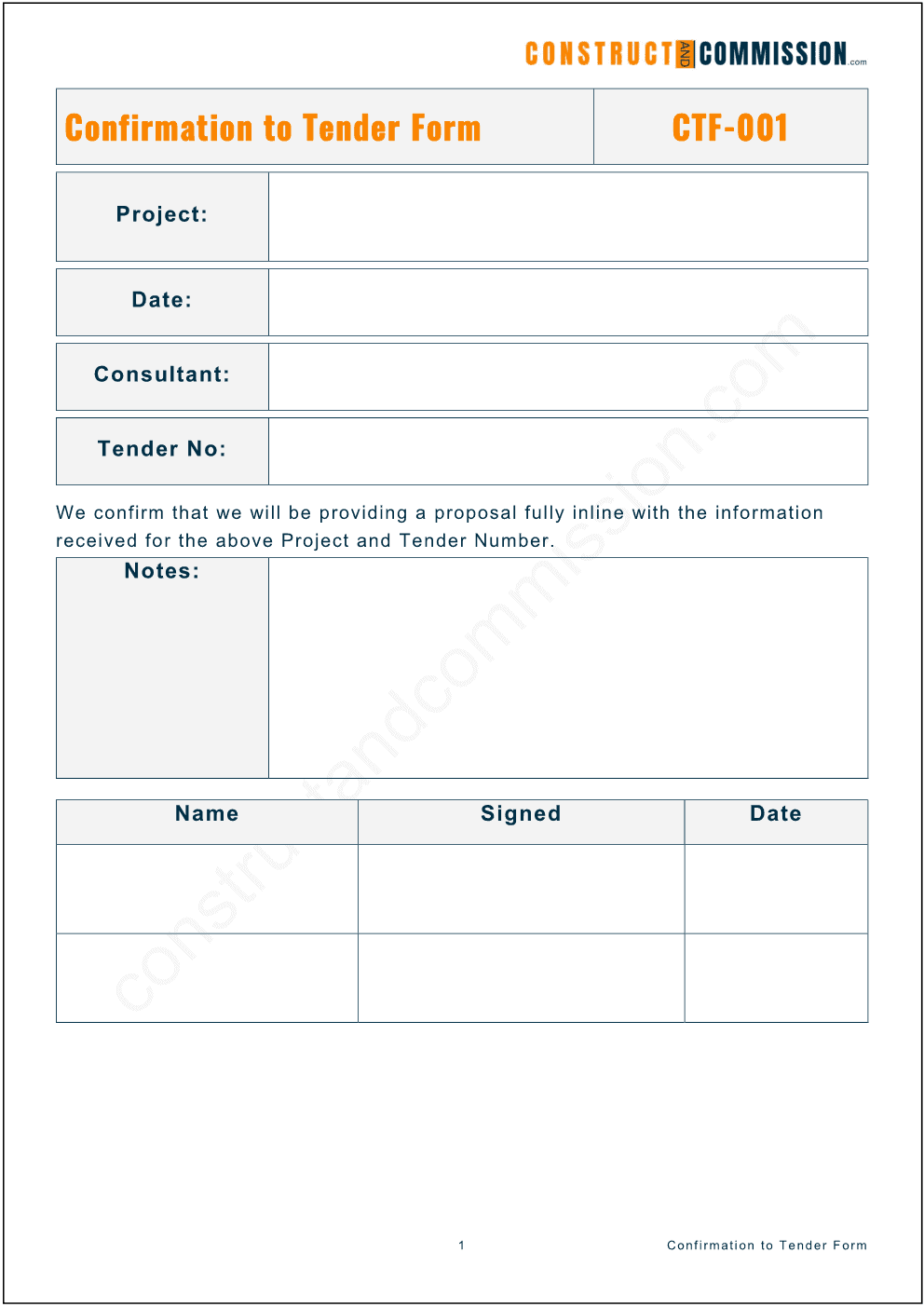
🟧 Appendix B, Resource Schedule
These should be provided by the Client/Project Manager and included in this appendix. If it is not available, then Commissioning Manager should provide their own copy.
It is better to use a common format to efficiently evaluate the services.
🟧 Appendix C, Tender Query Template
Refer to our article on Tender Queries during the Commissioning RFP & SOW Process
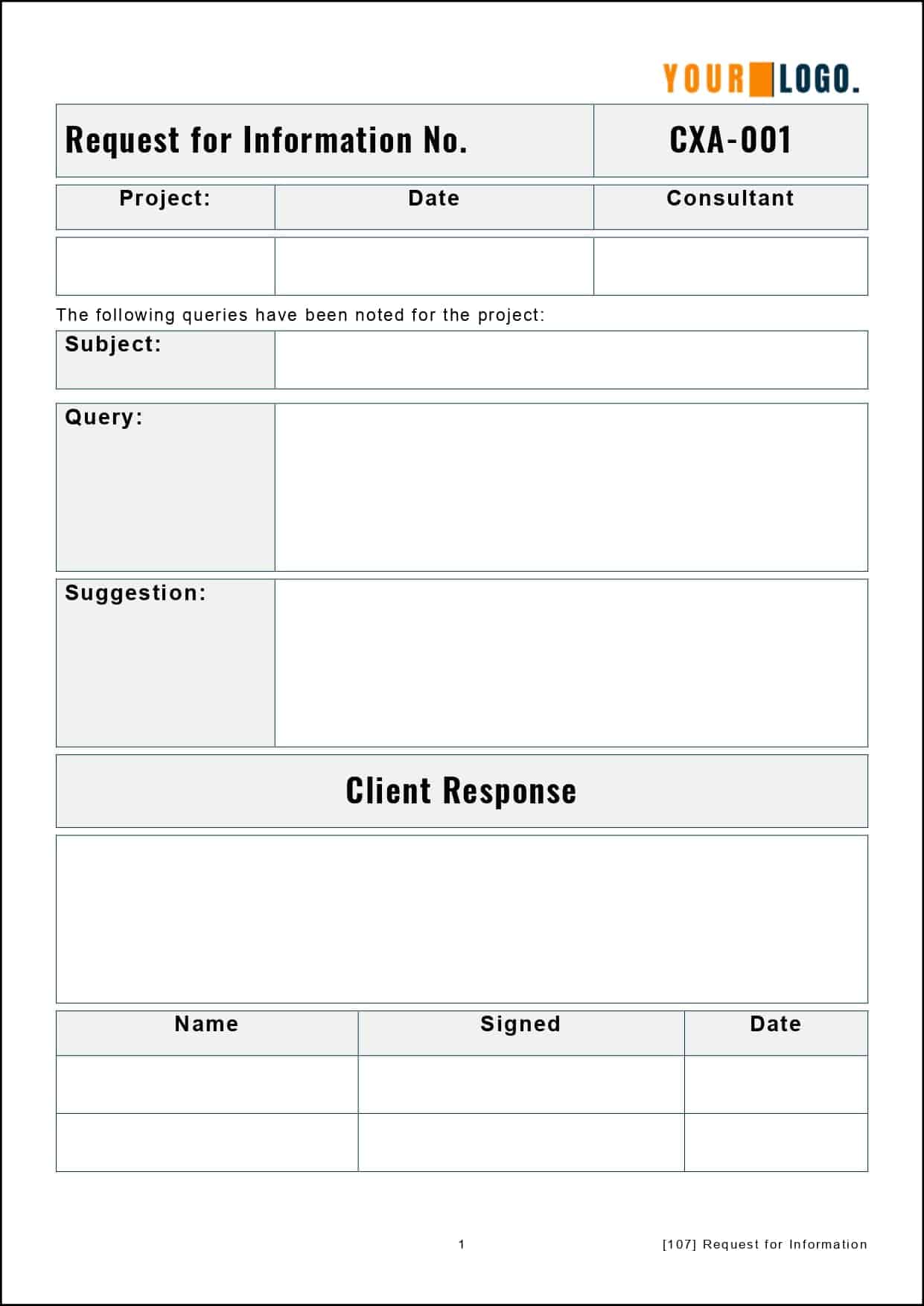
🟧 Appendix D, Commissioning Agent Scope of Works [SOW]
Refer to our article on Commissioning Agent Scope of Works
🟧 Appendix E, Contractual Requirements
These should be provided by the Client/Project Manager and included in this appendix.
⬜ Request for Proposal [RFP] Download [Open]
To help us expand the site and create more resources, we have created the below documentation in [Microsoft Word] for download.
Click the ‘Buy It Now‘ button to purchase the fully editable copy of the document below, which can be used straight away.
You will direct to our shop page.
⬛ Related Articles
ACKNOWLEDGMENT OF RFP/RFQ | with Simple Letter and Email Template
RFI vs RFQ vs RFP | Understanding the Differences
RFP / RFQ TENDERING PROCESS | How to Complete in 20 Steps
TENDER INTERVIEWS | Simple Guide
[SOW] CxA SCOPE OF WORKS | How to write and format with downloads


![Request For Proposal [RFP] Template [MS Word]](https://constructandcommission.com/wp-content/uploads/2022/01/025.webp)
